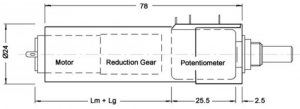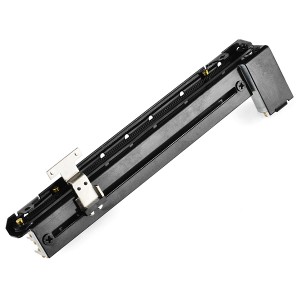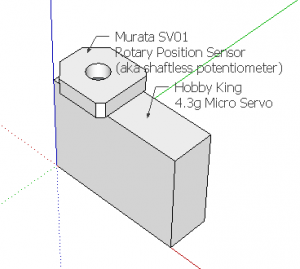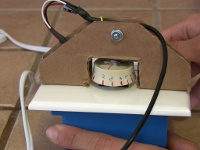And other ways to remotely control existing dials.
Suggestions from robotshop.com: http://www.robotshop.com/forum/post-p101569
Motorized potentiometers
from p3america: http://www.p3america.com/motorized_potentiometers_text.htm?gclid=CJSetfSYusUCFdOQHwodPEUAaw
From Online Controls: http://www.onlinecontrols.com/mpots.htm
Motorized faders
Sparkfun motorized fader (like the kind used in DAW control surfaces) https://www.sparkfun.com/products/10976
Servo control and sensing
from electronics stack exchange: http://electronics.stackexchange.com/questions/60272/servo-controlled-potentiometer-using-rotary-position-sensor
notes
The Potentiometer Handbook by Carl David Todd: https://www.bourns.com/pdfs/onlinepotentiometerhandbook.pdf
Google search: servo to turn a knob
Shower temperature control from SmithyTech: http://smithytech.com/?p=5
Arduino HVAC Servo Thermostat/Controller by tikka308: http://www.instructables.com/id/Arduino-HVAC-Servo-ThermostatController/
What kind of motor would I need to turn this central heating valve? http://electronics.stackexchange.com/questions/97269/what-kind-of-motor-would-i-need-to-turn-this-central-heating-valve – observations about the difficulty of using robots to turn knobs
Sous vide cooker with feedback control: http://www.nerdkits.com/videos/sous-vide/
Homemade Electric Telescope Focuser: http://emediadesigns.com/focuser/
Use your Raspberry Pi to move parts of a robot or control anything that can rotate – by Rob Zwetsloot http://www.linuxuser.co.uk/tutorials/control-servos-with-a-raspberry-pi






